Reading’s Outer Station
Reading’s Outer Station was opened in 1874 on 6th street between Buttonwood and Greenwich streets. Previously the city’s passenger station was a small waiting and room and ticket office on the northwest corner of 7th & Franklin Street. The Pennsylvania and Reading Railroad was the veins of the newly budding industrial city, and a larger hub for passenger service was necessary. An April 24th 1971 Reading Times article describes construction beginning on the depot,
“the building will be two stories, with French roof, and will be either of stone or brick. The upper story will contain the offices for the various officials of the road located in this city. The entrance of the building will be from Sixth sreet, underneath the shedding which is intended to extend all around the building, inclosing tracks on every side. Trains will thus be entirely under cover.”
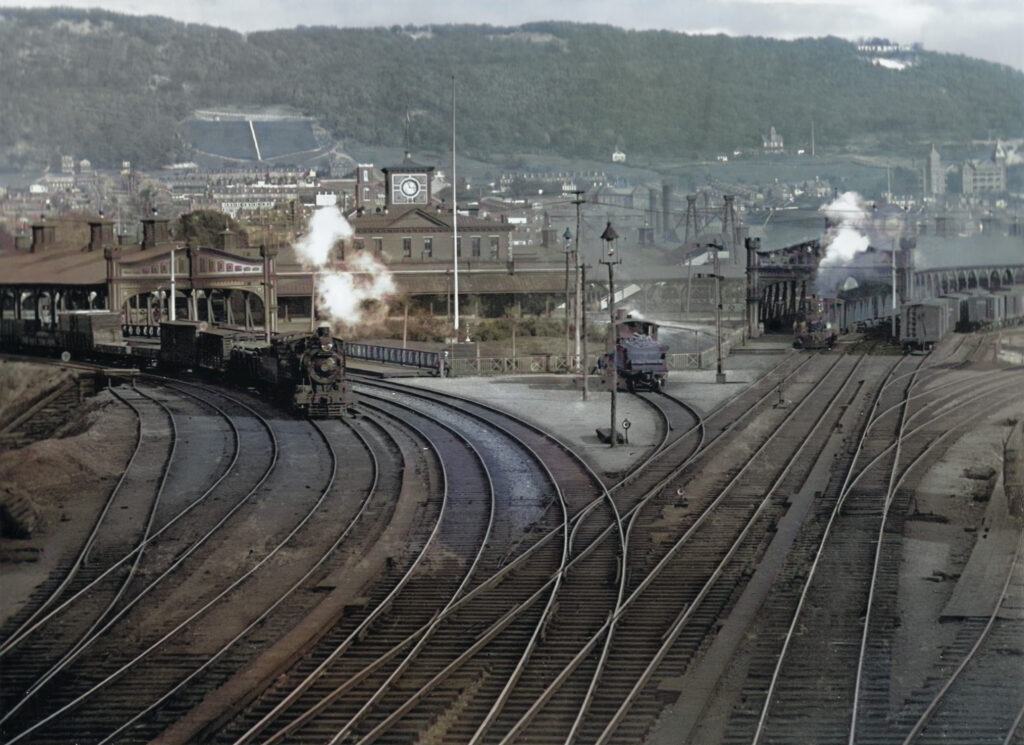
While it was in its heyday of operations the station boasted a restaurant, magazine stand and men’s and women’s waiting rooms. It served as Reading’s main passenger rail station until Franklin Street Station was completed in 1930. On October 8th, 1952 a young Senator Richard Nixon spoke to a crowd just outside of Outer Station. He was running as Vice President under the republican ticket of Dwight Eisenhower. They won the election that November.
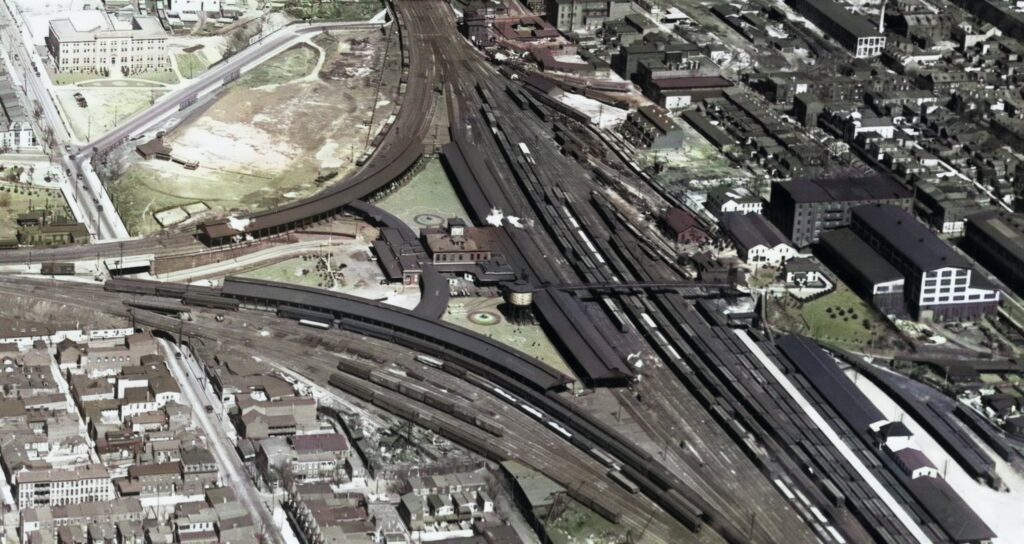
The Outer Station was closed in March 1969 and sat abandoned for 9 years until it was set ablaze on February 20th, 1978. The remains were razed shortly after.
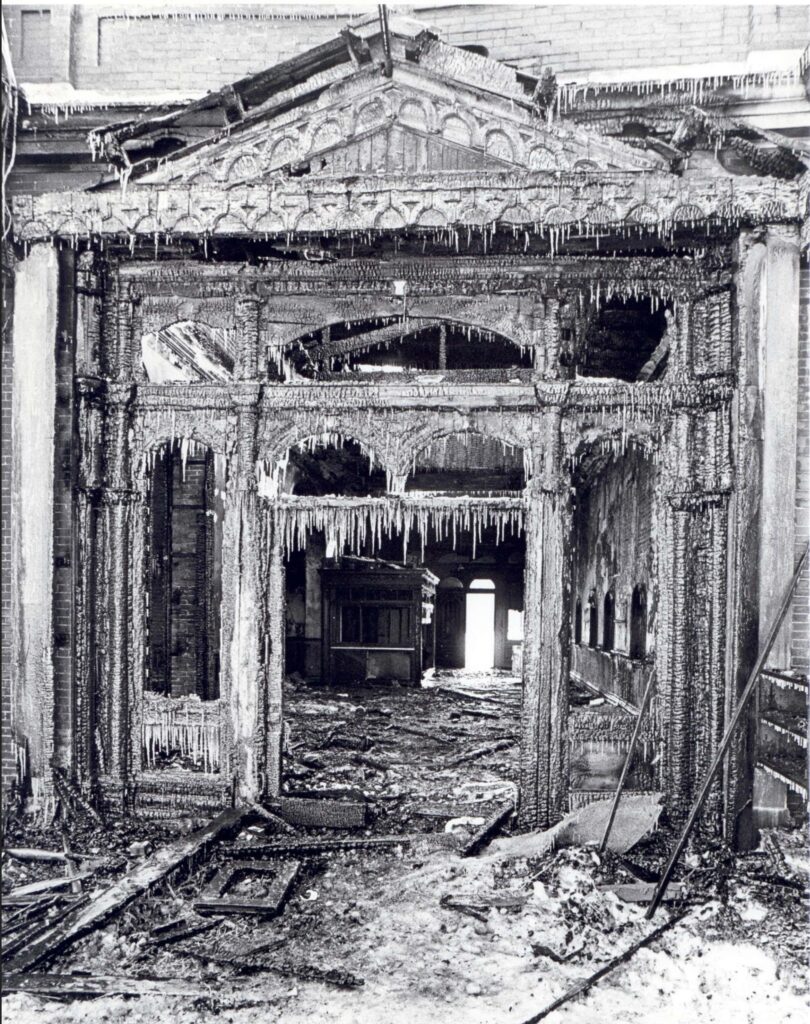
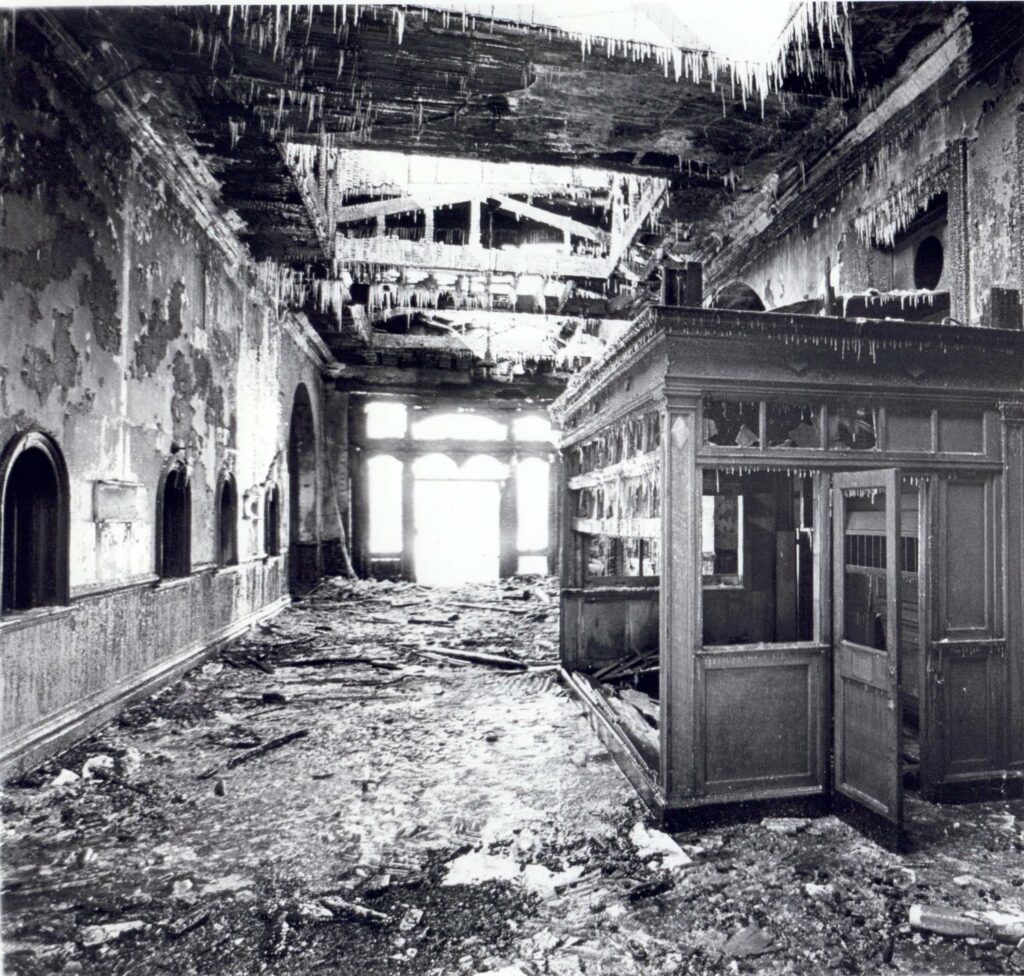
Swinging Bridge
In 1886, the Philadelphia & Reading Railroad (P&R) decided to provide a safe pedestrian route across its main line and yard tracks east of the Outer Station in Reading With the closest underpass located two blocks north of the station, pedestrians coming from the east likely risked walking directly across around 14 lanes of tracks. Clearly, a bridge was needed at the station itself, without intermediate piers or columns that would hamper future rearrangement of tracks. A suspension bridge would have been an attractive choice for the light pedestrian loading, because a long truss would have consumed a great amount of material just to support its own weight.

The P&R contracted with the John A. Roebling’s Sons Company of Trenton, New Jersey. Roebling engineer William (or Wilhelm) Hildenbrand designed the structure in October 1886, and it was completed the following year. Hildenbrand is associated with John Roebling’s best-known suspension bridges, serving as a draftsman on the Brooklyn Bridge, and engineering an 1898 retrofit of the Covington-Cincinnati Bridge over the Ohio River. The Reading Company, successor to the P&R, closed the span in 1964 and removed the approaches in 1967.
The local chapter of the American Society of Civil Engineers (ASCE) completed a study for its preservation in May 1983, proposing that the bridge be disassembled and re-erected elsewhere. But on 7 October of that year, Conrail, which had since acquired the Reading Company, unexpectedly hired the Empire Wrecking Company of Reading to raze it. Conrail cited safety reasons for what local papers called a “surprise demolition.” In response to public outcry, Empire Wrecking agreed to donate the parts to Berks County.

Only the one pillar was salvaged and it was put in Heritage Park to serve as a part of The Worker’s Memorial in 1991.

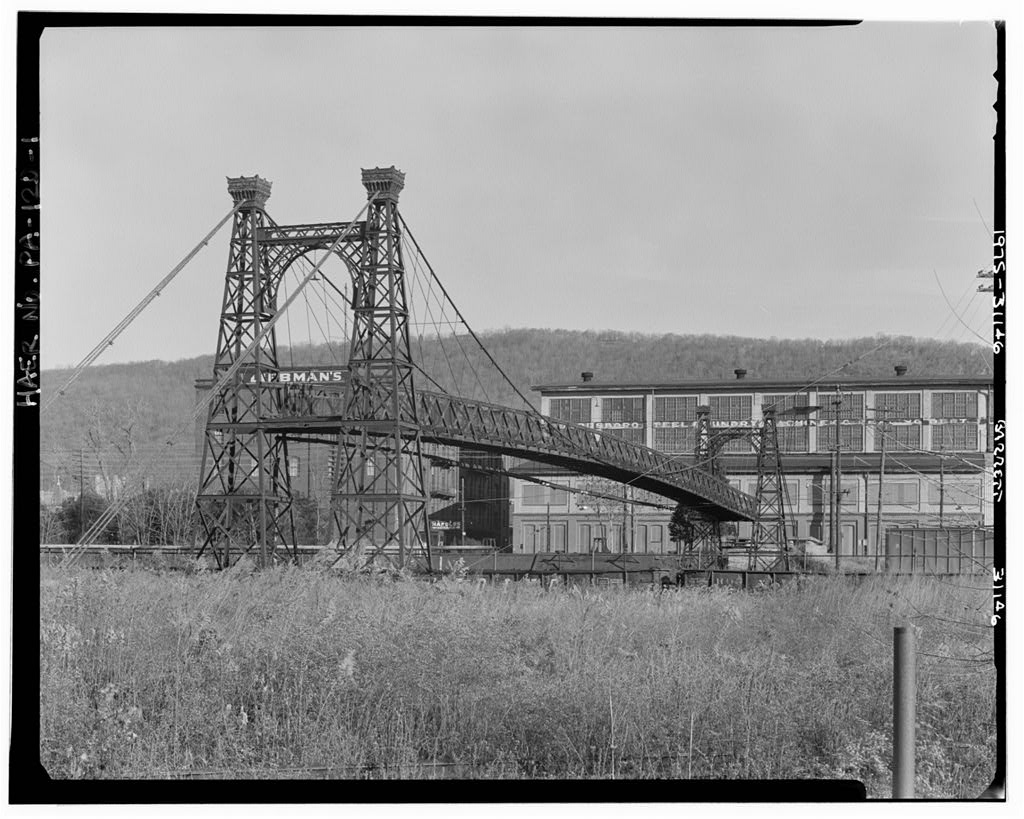
I was wondering more specifically where “Heritage Park” is where this single tower remains ? I tried looking on Google maps but it shows nothing more than the Berks Heritage Center but I’ve been there a hundred times and have never seen a tower like that there. Thanks for any information.
hey Gregg, Heritage park is on Canal Street all the way at the southern point of the city before the river. Here is a google map location: https://goo.gl/maps/rZL96cWNfNQ2
Thanks Alexa. I’ll need to put that on my bucket list of spots to check out.